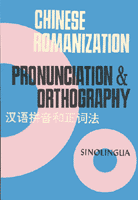 Today’s post is on the “mood particles” of Mandarin (426 KB PDF), e.g., a, ba, la, ma, ne.
Today’s post is on the “mood particles” of Mandarin (426 KB PDF), e.g., a, ba, la, ma, ne.
Mood-indicating particles are used to add various moods, spirits and tones to an utterance. “Mood” includes such diverse qualities as interrogation, request, command, emphasis, and exclamation. Some Chinese grammatologists classify mood particles as an independent part of speech, calling them “mood words.” Two distinctive features of mood particles are their position, typically at the end of a sentence or phrase, and their tone — they are usually read in the neutral tone. (In Hanyu Pinyin, consequently, they are never marked with tones.) The intonation of a sentence, which in Putonghua usually rests largely on the final syllable of an utterance, is in the case of a particle-final sentence transferred to the penultimate syllable. Mood particles are always written separately, from other components of a sentence.
Again: They’re always written separately and never with tone marks. So the orthography of these is easy.
OK, well, maybe the orthography is a little trickier than that. First, the examples give “bàle” (罷了/罢了), which sure looks to me like it has a tone mark. And then there’s the case of “a” (啊), which is an extremely common particle “used to express emotion, affirmation, interrogation, and other moods.”
In speech, its pronunciation is partially determined by the final of the syllable preceding it. After -a, -e, -i, -o, or -ü, a 啊 is pronounced “ya” 呀; after -u, “wa” 哇; and after -n, “na” 哪. These different pronunciations are conventionally represented by the different characters seen here; in Hanyu Pinyin, however, a single “a” is used to represent them all.
That certainly complicates matters if you’re trying to get a Chinese-characters-to-Pinyin converter to work properly. Note that when Yin Binyong is writing above about finals, he’s referring to sounds, not spellings. Thus, what’s written “hǎo a” is pronounced “hǎo wa,” not “hǎo ya” (and not “hǎo a” either, of course). If you’re still wondering about this, say –ao very slowly to notice the -u final. (Y.R. Chao and George Kennedy had good reasons for choosing -au in their romanization systems rather for what is -ao in Hanyu Pinyin.) Also, the distinction between a/ya isn’t absolute.
But the practice of just using “a” makes life easy if you’re writing something in Pinyin, which I’m grateful for, given that particles are, for people trying to learn how to employ them, zhēn de hǎo máfan a! So beginning and intermediate students of Mandarin should definitely read this selection.
